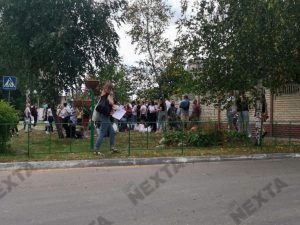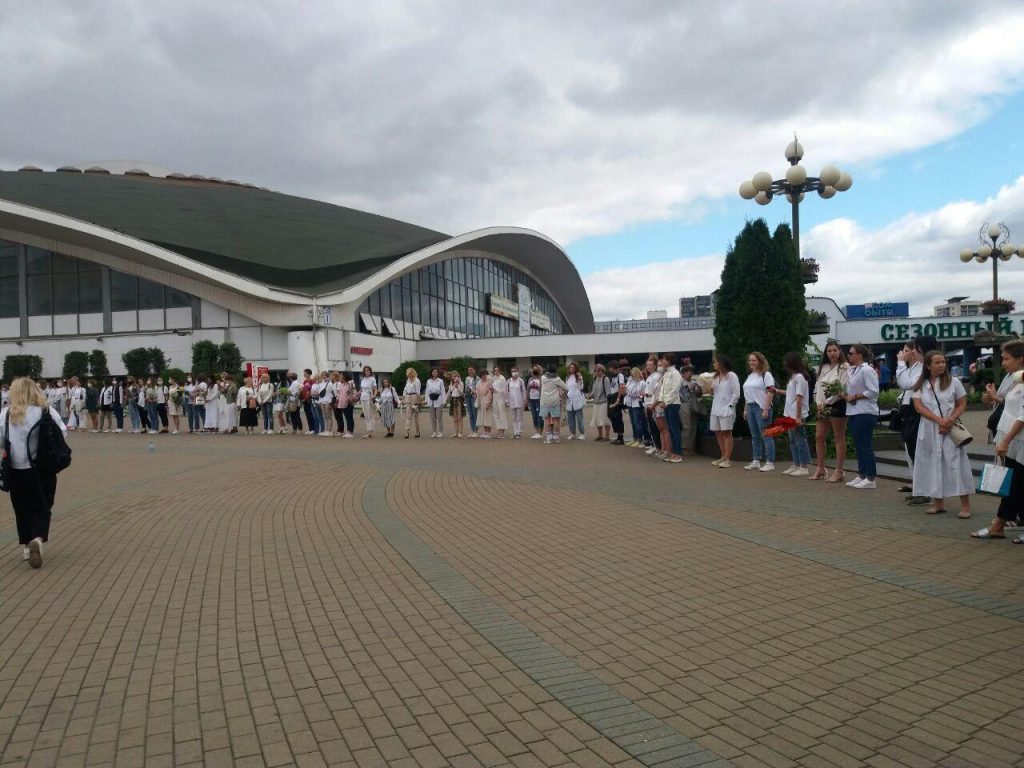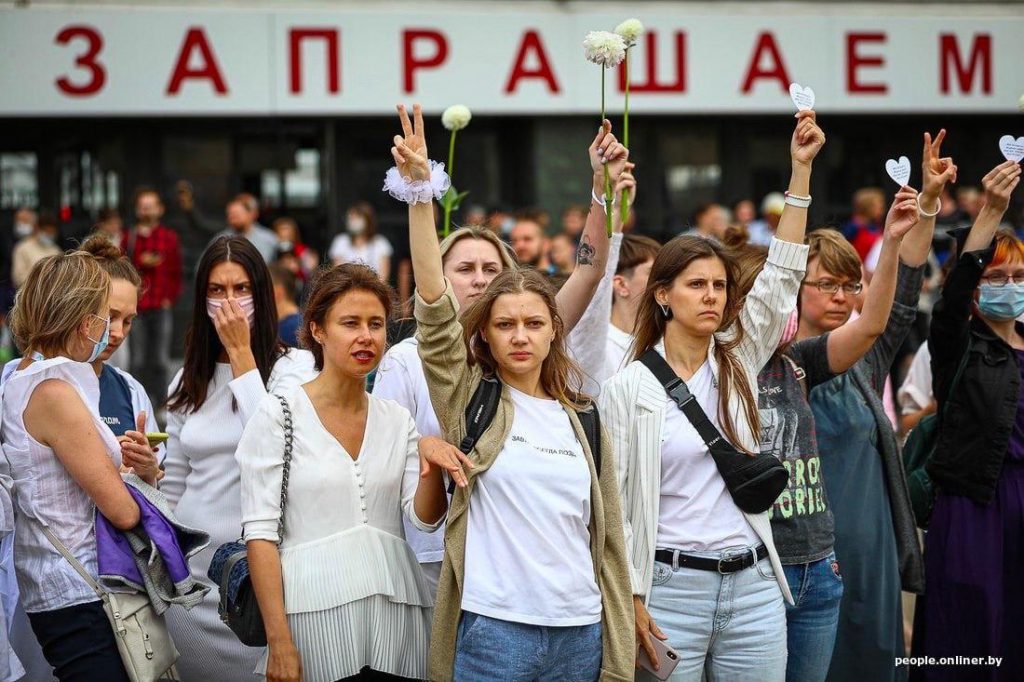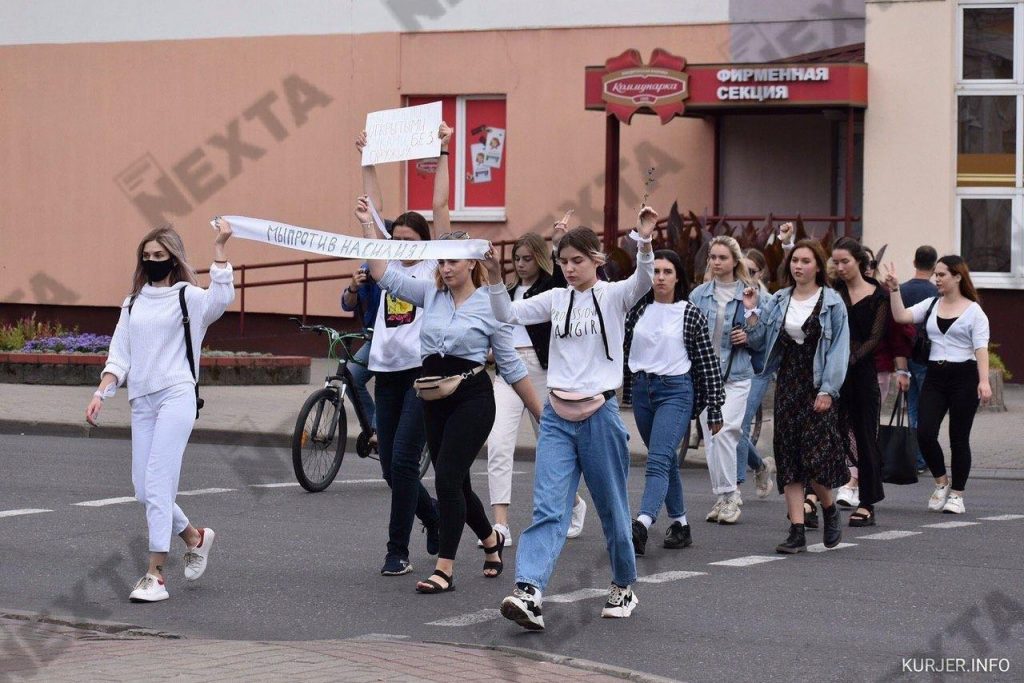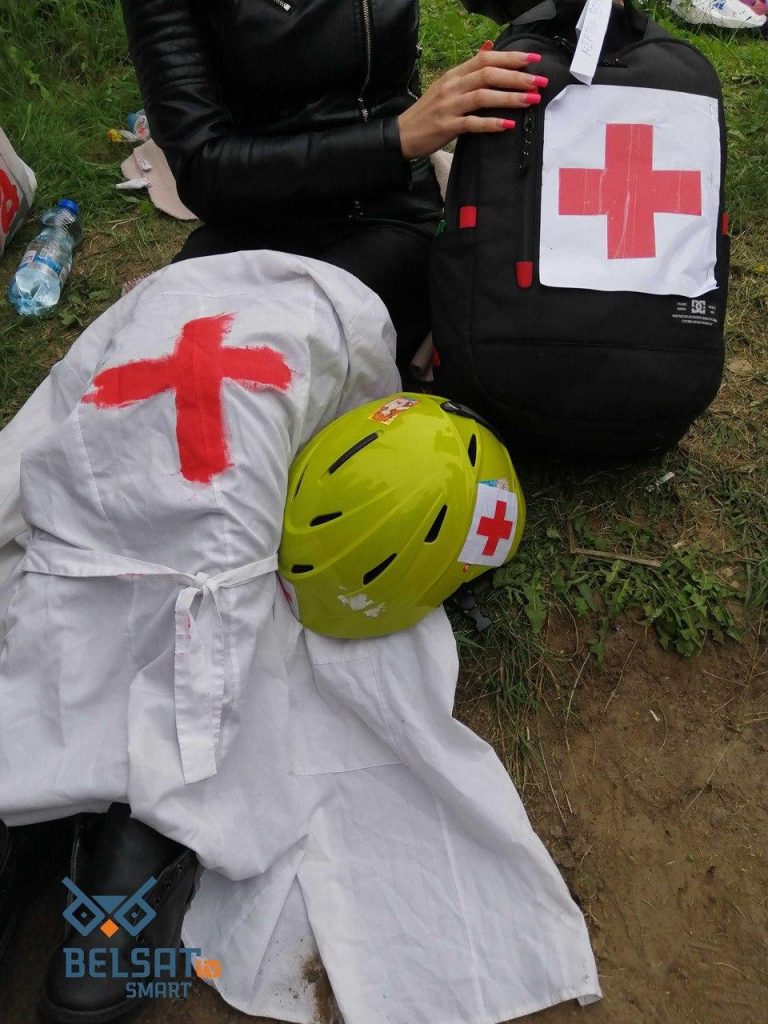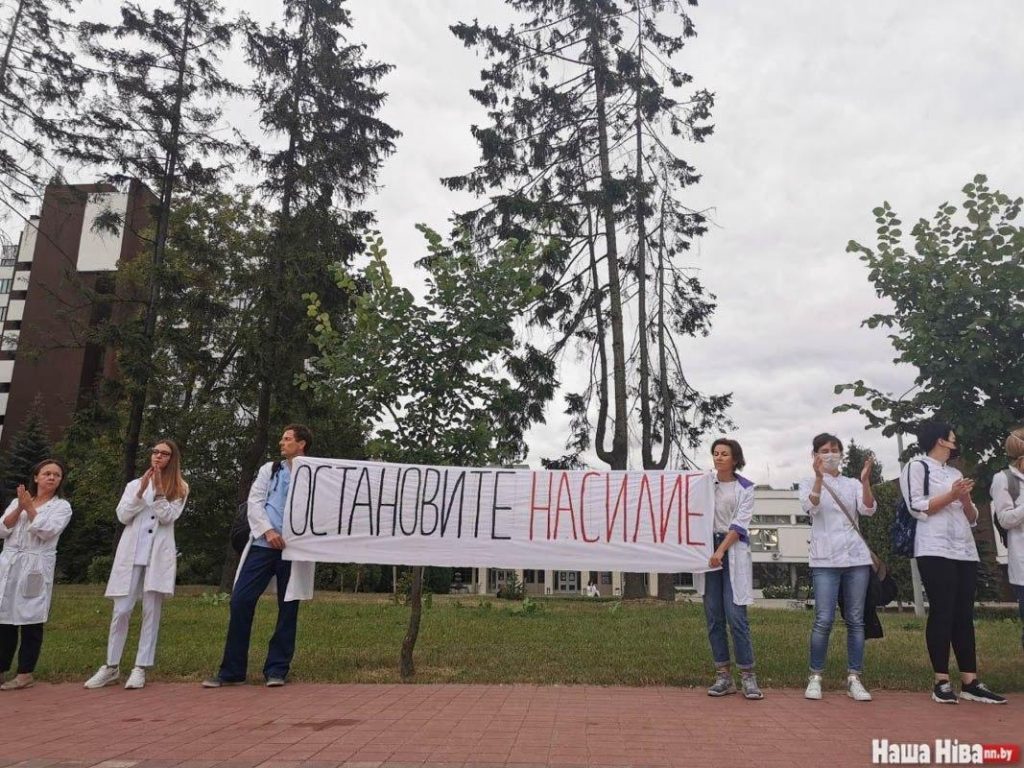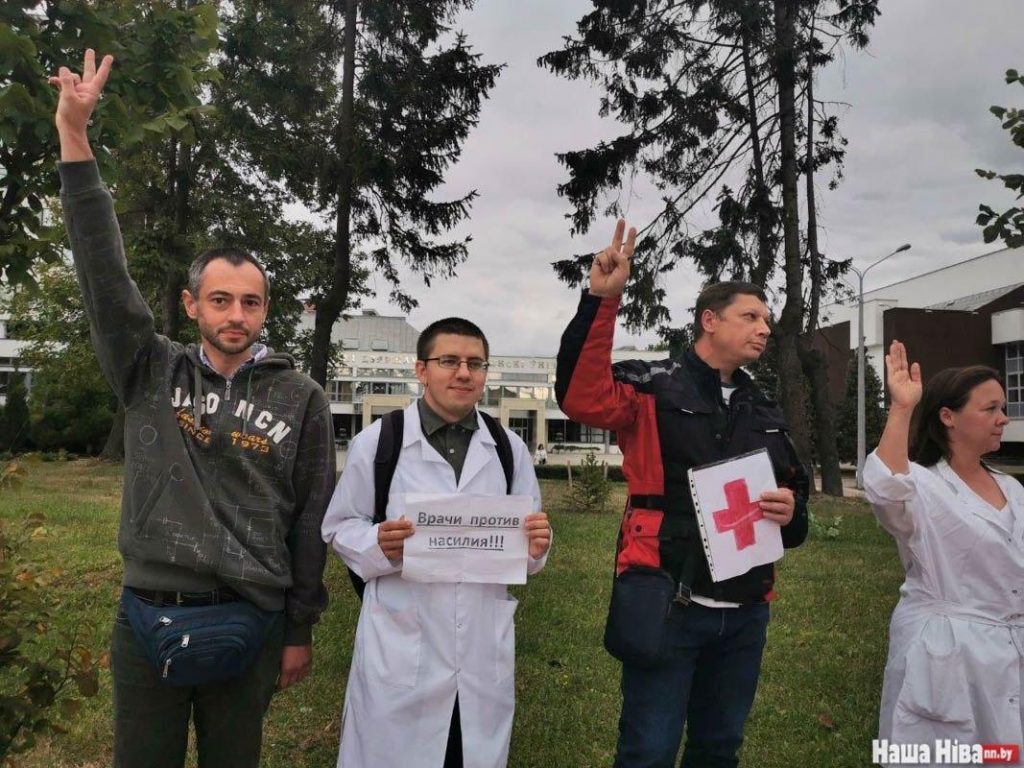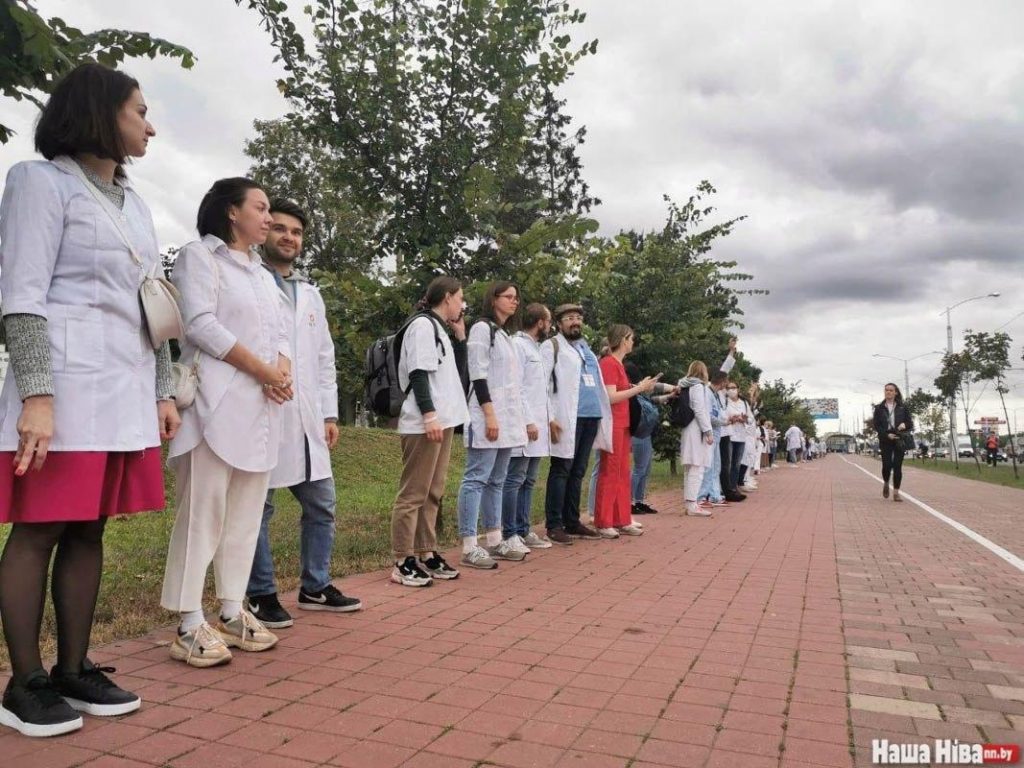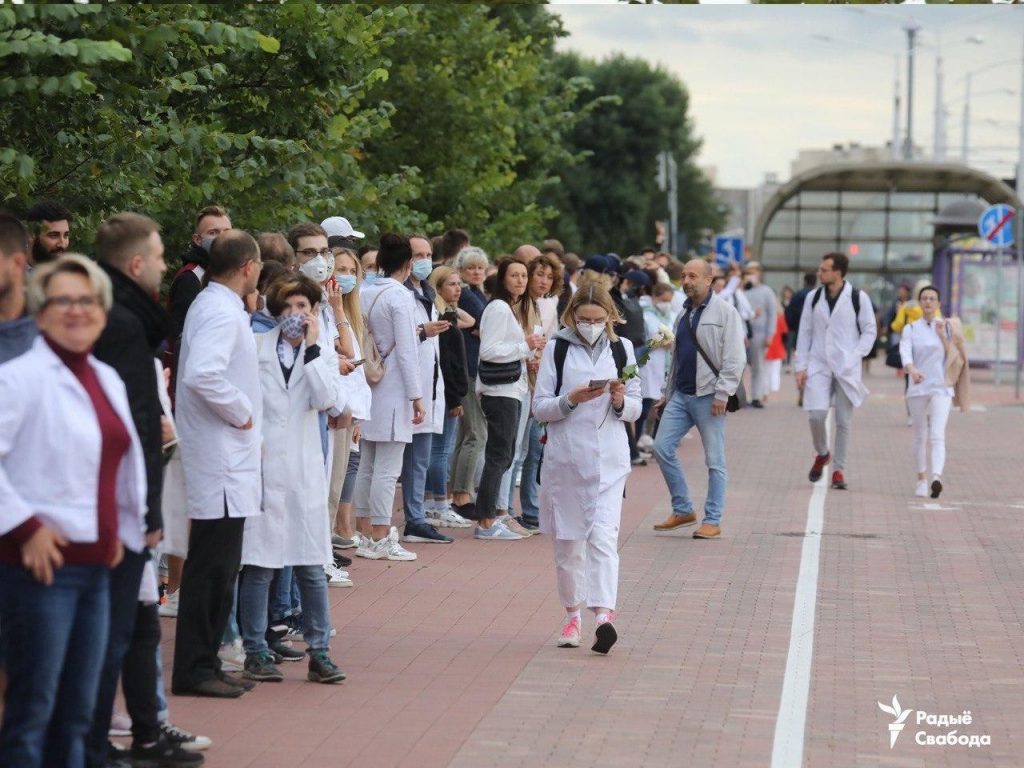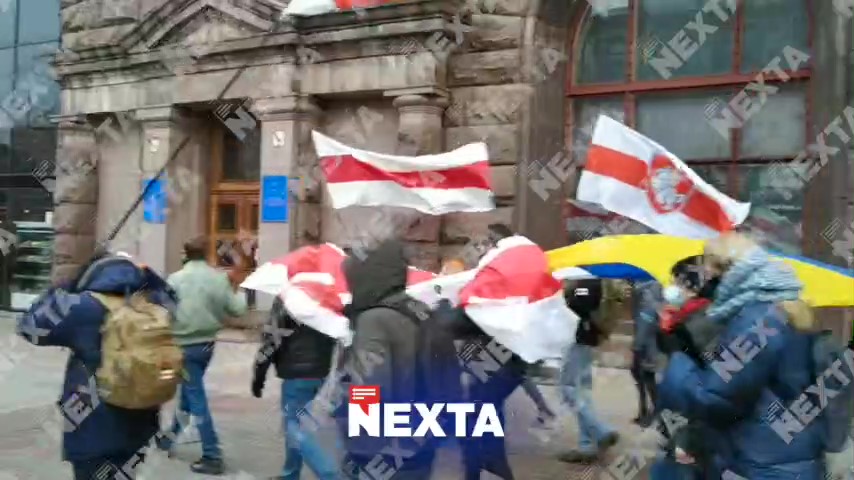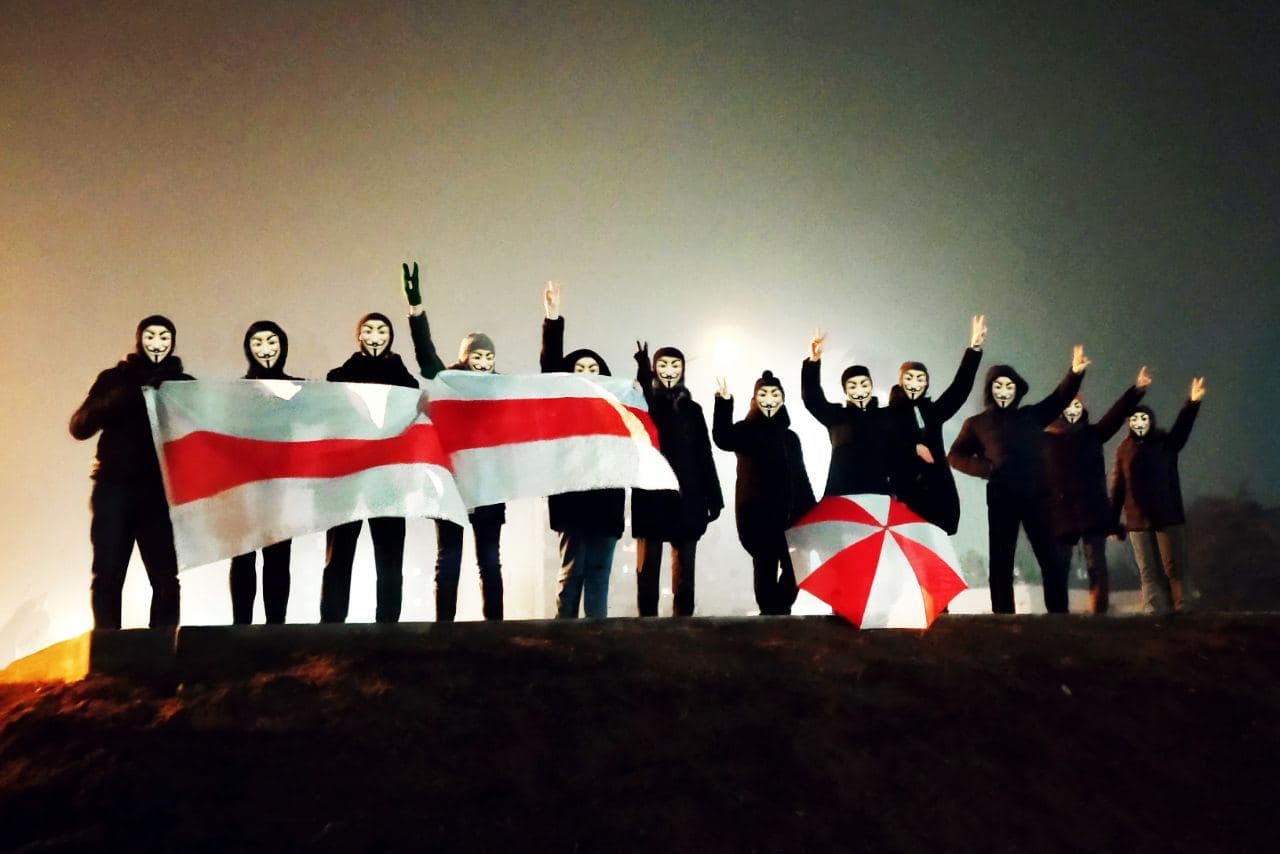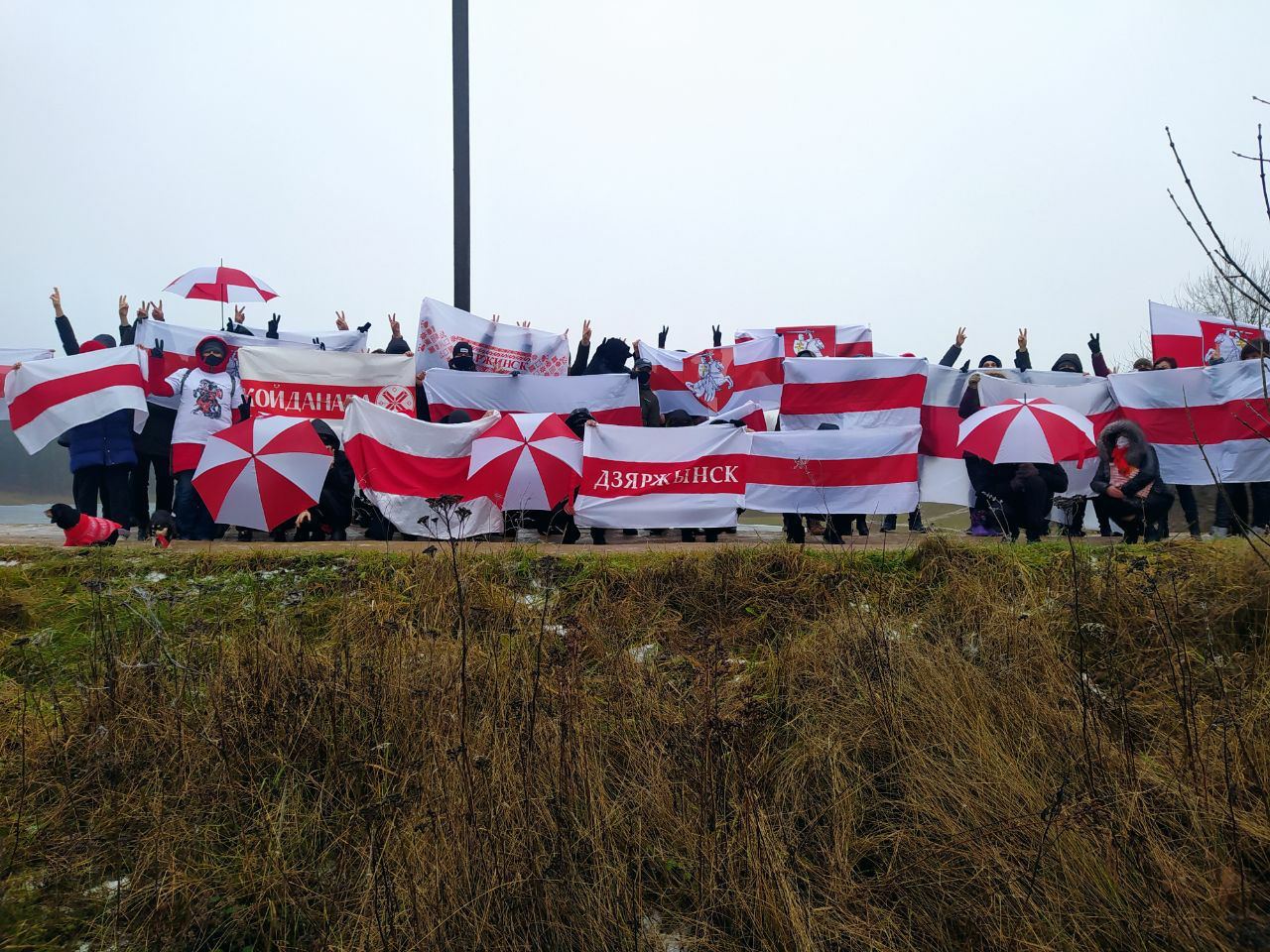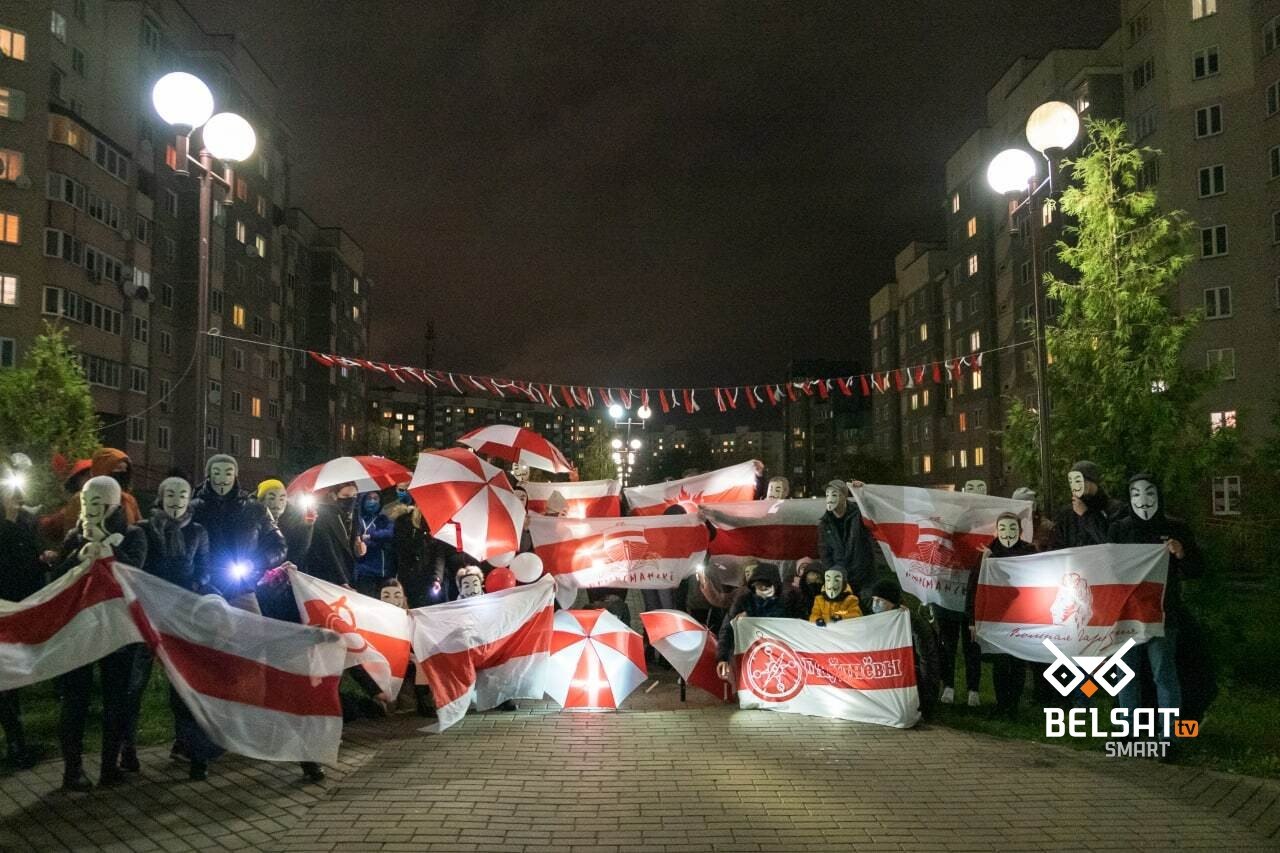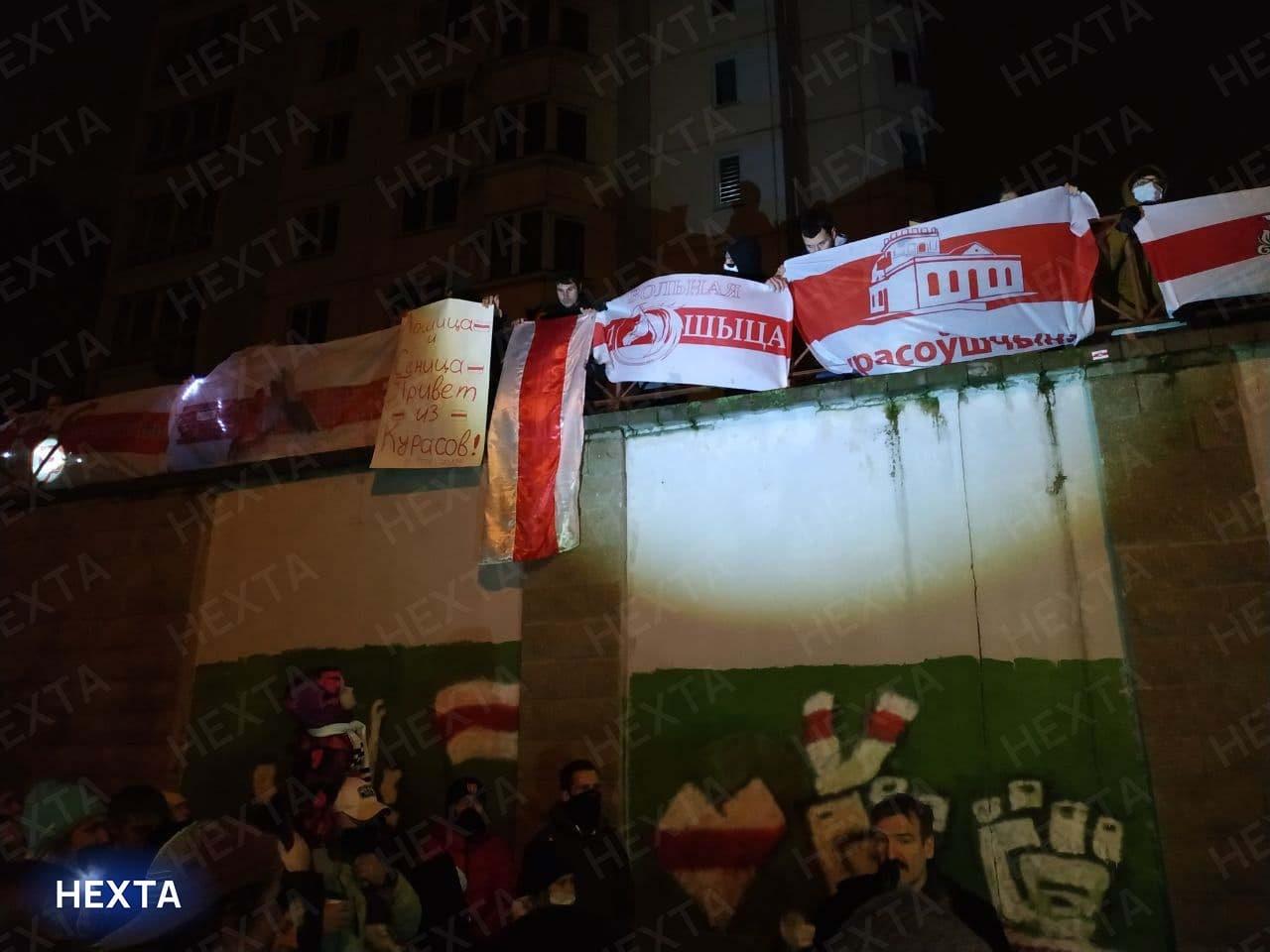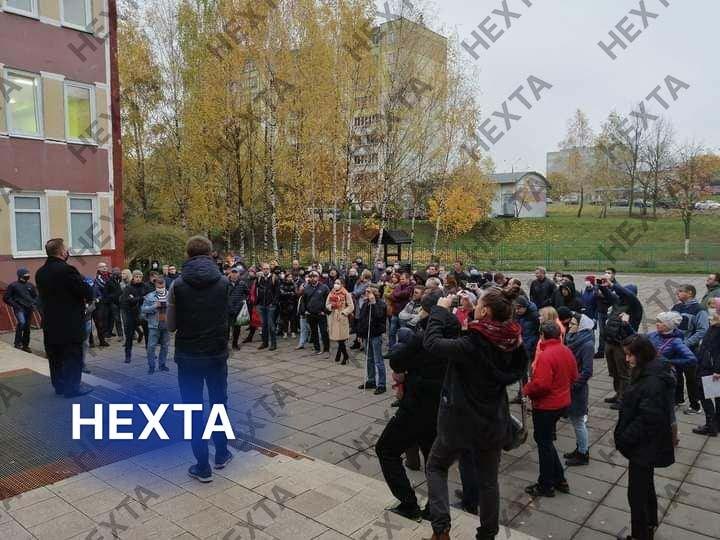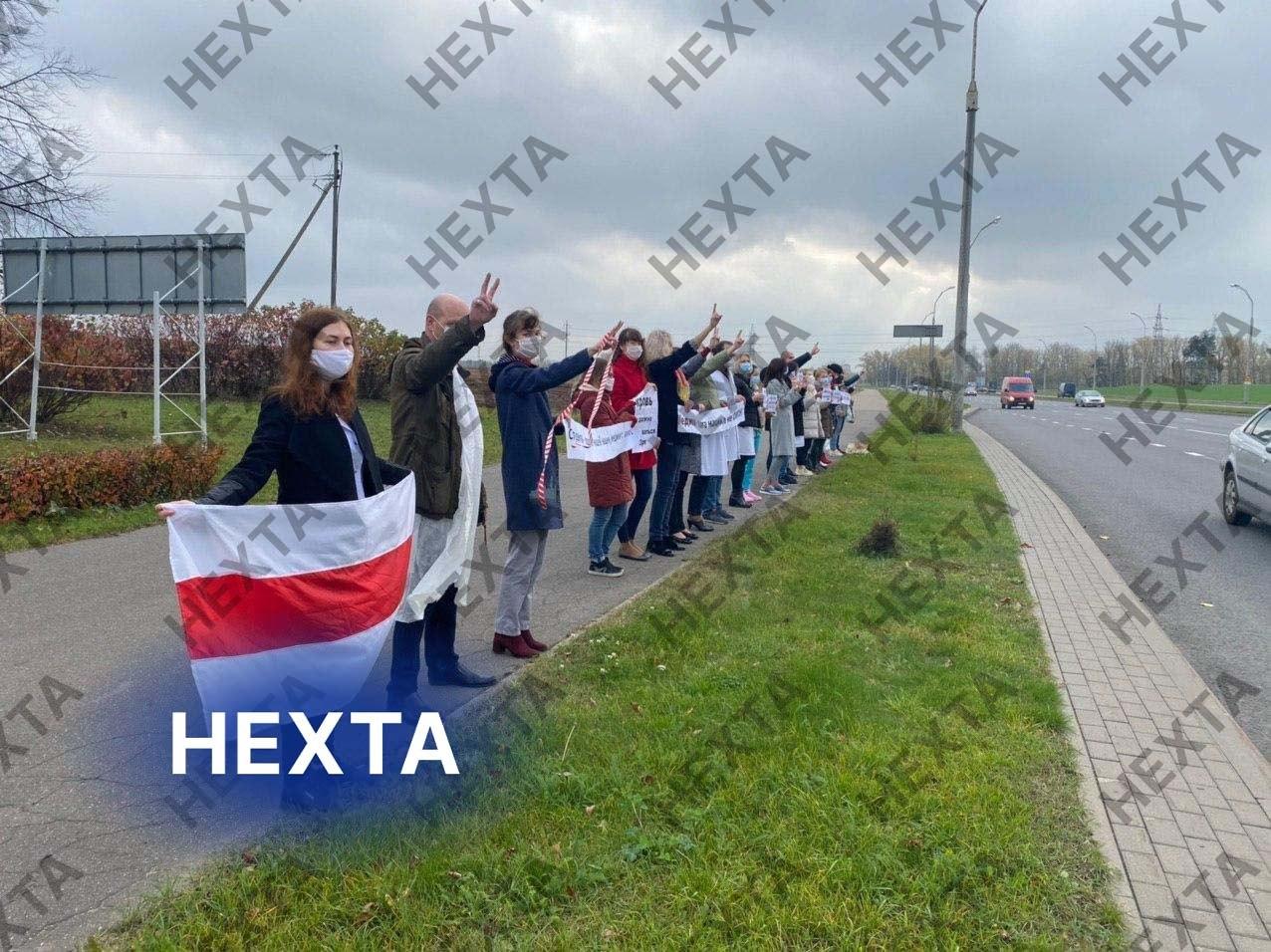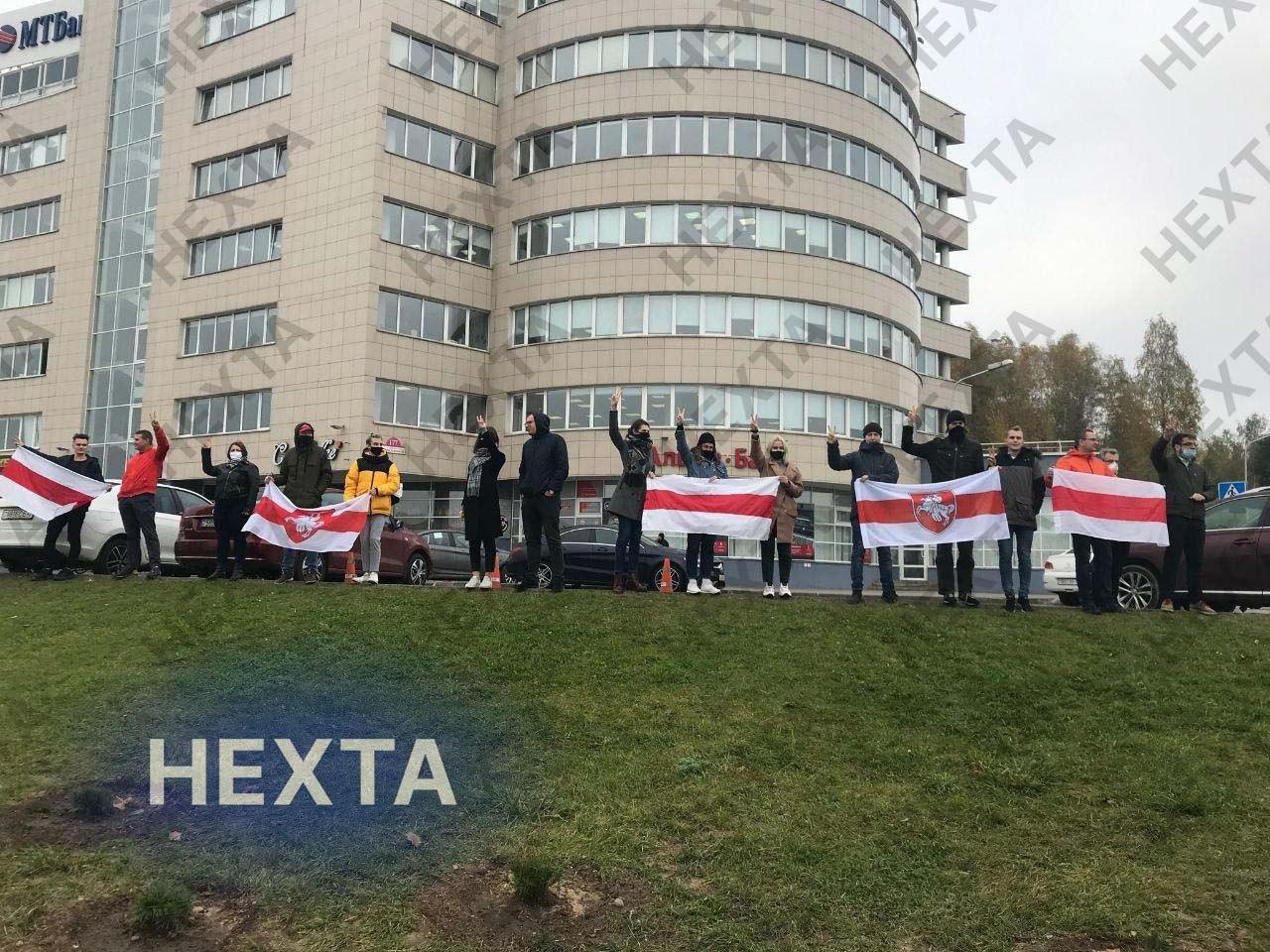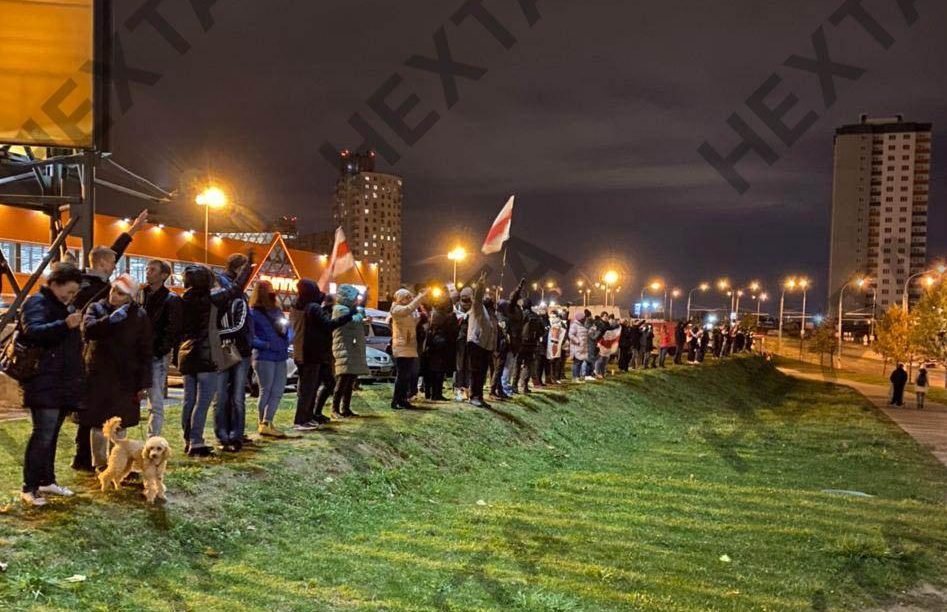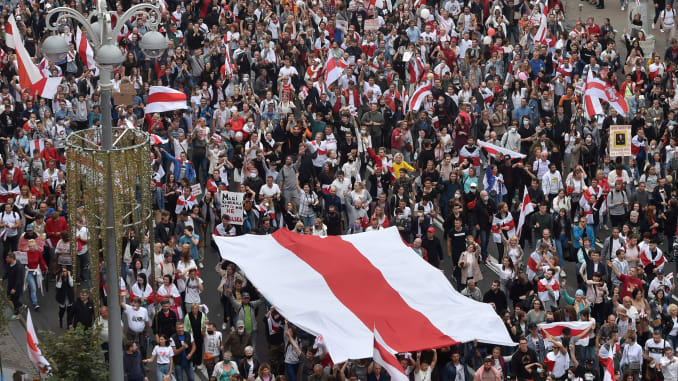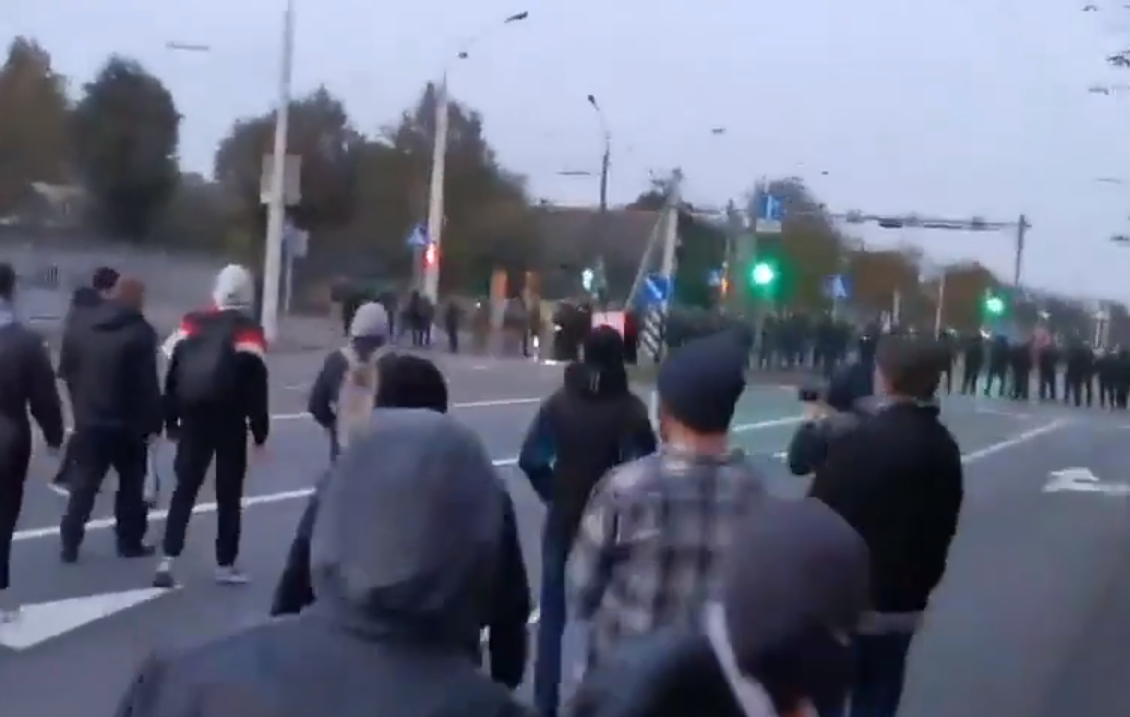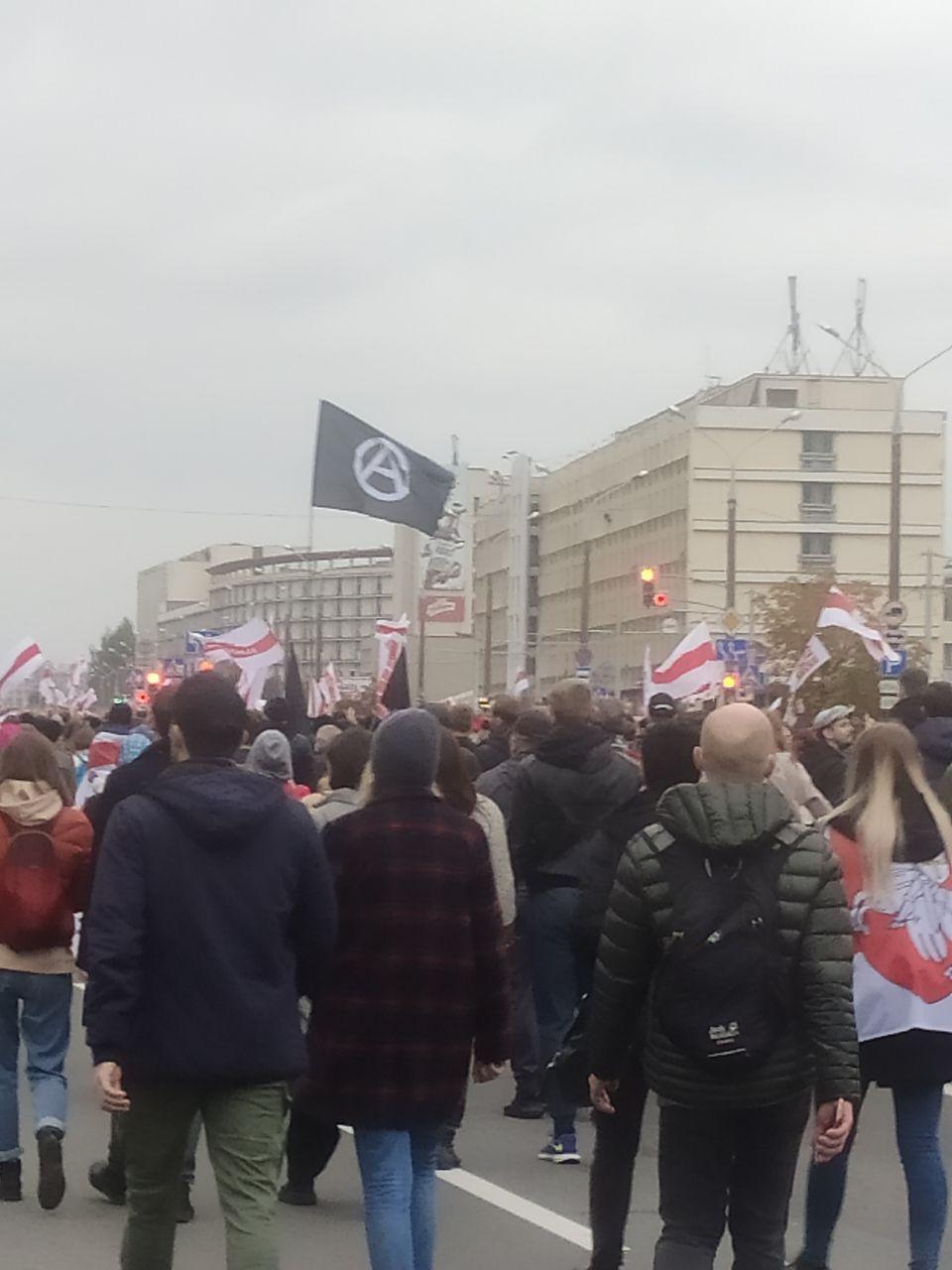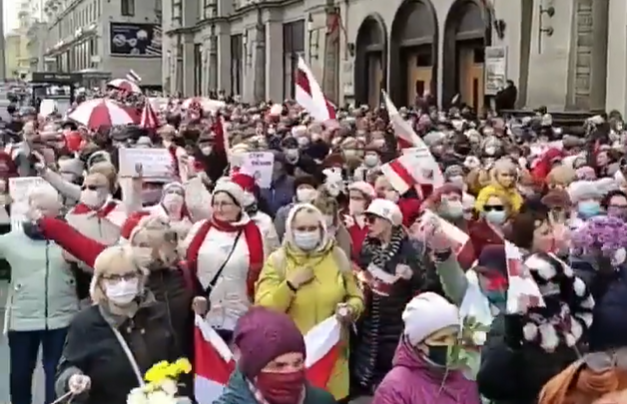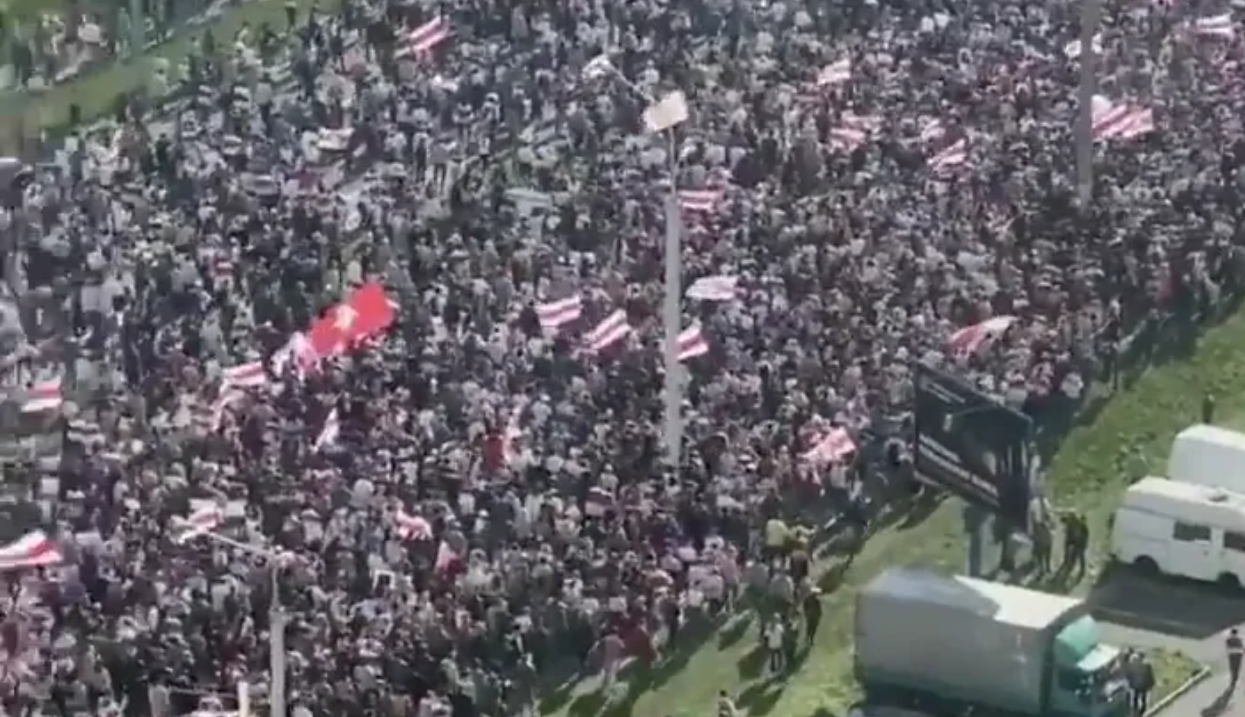Table of Contents
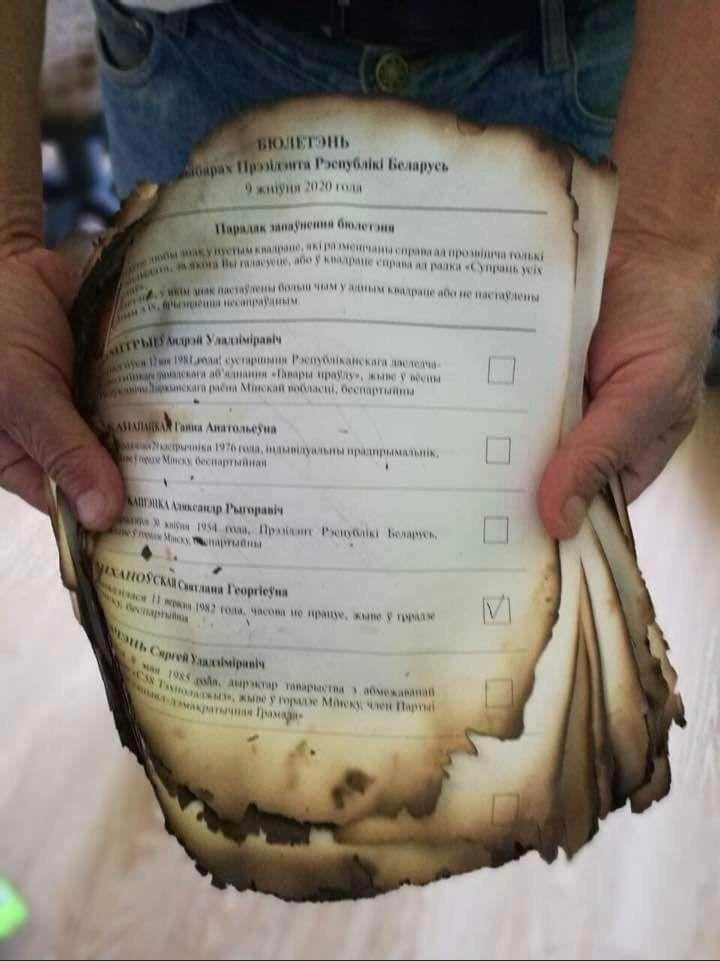
Preface
Flag
Protests in Minsk
Protests in Maladziečna
Protests in Kobryn
Protests in Viciebsk
Protests in Grodno
Protests in Brest
Timeline
Union Strikes
Updates
Preface (Written by Pramen)
If you had asked people in Belarus how long the dictatorship of Lukashenko was left in early 2020, they would have looked at you like a fool. In a respected dictatorship, such questions are not asked, because you know what can happen. And in general, it so happens that the reign of the great leader is timeless. But the situation has changed so radically over the last 8 months that Belarusians took to the streets and for the first time in the new history of Belarus they fought back the police in at least 33 different cities of the country.
Today Belarusians have woken up in a new country. In it, people openly talk about hatred for the government and prepare for a violent confrontation with the police and state. They discuss online and live effective methods of struggle. Several factories went on strike the day after the elections.
And although the electoral commission reports about the victory of the dictator once again, objectively speaking, Lukashenko lost the election. He lost the election not to some certain candidate, but rather to the Belarusian people, who said that 26 years was enough.
How has Belarus turned from a stable dictatorship, where the most peaceful people live, into a protest center in Europe?
Economic and political crisis
Economically, Belarus is not an independent country. For many years, the Belarusian economic miracle has been able to survive only at the expense of cheap oil from Putin and direct money transfers from the Kremlin. Contrary to the fact that Lukashenko and Putin are not friends, this scheme worked relatively long while the Russian government was bathing in oil money.
With black gold prices falling, the Russian government was faced with the question of redistributing resources. Officials began to look at where the money invested was yielding some kind of result. Belarus did not give any special results. Contrary to all investments, Lukashenko extended his hold on power and hindered Belarus’ integration into Russia – a process launched back in the 90s during Yeltsin.
The instability of Lukashenko over the past 10 years has shown that the Russian authorities cannot rely on him much. Turn to the West in 2015 added wood to the fire of discord between Moscow and Minsk. By early 2020, Lukashenko found himself in a very difficult situation. New oil and gas contracts have become much more difficult to conclude. The Belarusian authorities wanted at least some minimal concessions, but Russia was ready to give these concessions only when activating the project of the union state, with the joint currency and other points for the absorption of Belarus by Russia.
Political difficulties with Russia traditionally lead to economic problems in the country. During the last 5 years Lukashenko tried to neutralize this dependence by working with the West, but Western grants and loans cannot pull the Belarusian economy alone. In early 2020, the Belarusian ruble started to fall heavily against other currencies. Over the past 20 years, Belarusians have managed to survive several waves of such a fall, the largest being in 2011. The fall of the Belarusian ruble means for many Belarusians, including the fall in their real earnings. In addition, problems with the payment of salaries at state enterprises began to arise.
Fighting coronavirus with tractors
Lukashenko explained that it is due to economic problems that that Belarus cann’t afford any quarantine measures against the coronavirus. If at the beginning of the epidemic the dictator was still shouting that the Belarusians would be able to avoid getting infected by work in the field and visiting the sauna, a month later he had to admit the real reasons for the lack of quarantine.
The coronovirus proved to be one of the most serious challenges for the Belarusian dictatorship, which it failed. Instead of typical populism and care for their people the authorities left the population on self-sufficiency.
Medical care in Belarus is nominally free of charge, but many services have to be paid for, as there is not enough money from the budget for drugs and medical equipment. It was impossible to test for coronavirus in many cases. Many could not afford to stay home and go to work. It is difficult to assess the real scale of the Coronavirus epidemic in Belarus. The state is the only institution that has real figures, and these figures are kept secret. In addition, many cases of coronavirus were labelled as pneumonia, including fatal.
In order to maintain medical care, small businesses and a large number of ordinary people have, in fact, engaged in decentralized support of medical staff. Some restaurants and bars prepared food for the medical staff from the donations made by city dwellers. As in other countries, grass-roots initiatives produced protective masks. Taxi drivers transported medical personnel without payment.
A few months later, many people had the feeling that the state had abandoned them. But, on the other hand, there was a sense of solidarity, the certainty that neighbors, friends and even strangers from the Internet would not leave you in trouble. This feeling has restored to Belarusians the importance of the public as opposed to the state. Solidarity has become not just a word, but a direct practice.
And if in many countries, which were under the impact of coronavirus, with the fall of the number of infected, solidarity began to fall, in Belarus the structures of solidarity continued to work in other spheres as well. For example, in June, half of Minsk lost access to clean water. And while officials insisted that there was no problem with water, residents of the districts with water were organizing and delivering water to the neediest parts of the city.
Thus, one of the most important results of the coronavirus (the epidemic did not end in the country) was the growing awareness of the collective strength and the results that can be achieved through joint actions.
Elections during the virus
It was a mistake for Lukashenko to decide to announce the elections in the midst of the coronavirus: in early May, they announced that the elections would be held in August. The moment of maximum dissatisfaction with the authorities was chosen. Thanks to this, the election campaigns of his opponents literally began to gain a huge amount of support from the very first days. One of the presidential candidates, blogger Sergei Tikhanovsky, began holding rallies with an open microphone at the place of collecting signatures. This format attracted a huge number of people across the country, who were given a platform to express their discontent. A few weeks later, Tikhanovsky himself and many other major opposition politicians were detained and charged in far-fetched criminal cases.
Instead of extinguishing the protest and dissatisfaction with the authorities, the repression provoked even more organization around another candidate – banker of Belgazprombank (daughter of Gazprom) Viktor Babariko. Unlike other candidates, Babariko was not engaged in political struggle and for many he looked like a “moderate” candidate who called for fair elections and did not plan illegal demonstrations across the country. Contrary to this, Babariko’s popularity was also growing among the more moderate part of the population.
As a result, the authorities decided to arrest Babariko and his inner circle on corruption charges. This step provoked another wave of discontent, the final stage of which was the announcement that the two largest opposition candidates would not be registered in the race for presidency. This decision resulted in major protests across the country with the first clashes with the police in Minsk: the demonstrators repulsed the detainees and saw that the OMON was absolutely unprepared for a violent confrontation with the people.
The clashes with riot police in July this year were a turning point for many in society. The dictatorship, which for 26 years had been built in part on its indestructibility through the support of the security forces, was suddenly extremely fragile. Videos of the confused OMON riot police quickly spread over the Internet and showed that one doesn’t have to train for 3 years in camps in Russia or the EU to fight the police.
Lukashenko did not deny registration to only one serious opponent, Sergei Tikhanovsky’s wife, Svetlana Tikhanovskaya. Tikhanovskaya originally planned to run for president in order to give her husband and other opponents of the regime a voice. But after the majority of politicians were arrested, she remained the only candidate around whom voters could unite.
Tikhanovskaya is not a politician and is not trying to become one. The main requirement of her entire election campaign is new elections. She openly says that she has no plans and does not want to stay in power. After the victory in Lukashenko, she planned to announce new fair elections, which should have changed the country.
Such a simple demand has united many political groups. Activists from the staffs of the imprisoned politicians got involved in her election headquarters. Tikhanovskaya’s very election campaign relied heavily on the self-organization of the population in various parts of the country. Meetings with the candidate were officially registered in many places in the country where the candidate herself had not visited. Instead, there was a stage for speeches and an open microphone. Again, the microphone was rarely picked up by career politicians who feared reprisals, but rather by the working population and small businesses. In some cities, anarchists also spoke on stage.
Tikhanovskaya’s popularity soared in just a few weeks. In July, she managed to gather one of the largest rallies in the history of the country – 50,000 people in Minsk. In other cities, she gathered from several hundred to 8,000 people. For a long time the authorities did not take any measures and allowed people to gather. Perhaps the role was played by the sexism of Lukashenko, who never held women for serious opponents of the authorities. The top of Tikhanovskaya’s team were women. Tikhanovskaya also came on stage with two coordinators of her campaign.
Just a few days before the election, the authorities suddenly came to their senses. Instead of banning the gatherings, the decision was to play fools – all the venues declared open for rallies began to hold government events or repairs. The ban on assembly has provoked the next wave of discontent, but in active stages of protest has not turned out, as there were only a few days left before elections.
At the same time, during the last week the Belarusian police started actively detaining bloggers. Such tactics are not new and have been used by the authorities for many years – before any protests there are constant detentions of journalists and bloggers, who can cover these protests online.
Terrorist organization “Anarchists”
Before we proceed directly to election day, I would like to make a short introduction to the anarchist movement in Belarus.
Anarchists have reappeared in the country after the collapse of the Soviet Union. In the early nineties, some groups made a significant contribution to the formation of the workers’ and environmental movement. Anarchists played one of the key roles in extending the moratorium on the construction of the Belarusian nuclear power plant in 1999 (in 2009 anarchists and environmentalists lost the fight).
During the entire period of the dictatorship, anarchists have been involved in major political events, be it new re-elections, the movement against the construction of the nuclear power plant or protests against the laws on parasites. And in most cases, the population perceived the anarchist agenda very positively. Perhaps, somewhere they did not fully understand but accepted it.
Starting from 2013-2014, anarchists have become almost the only political force still engaged in street agitation. Most opposition parties have stopped fighting actively against the dictatorship after Maidan 2014 in fear of Russian occupation. Today, some opposition politicians still stand on the position “better Lukashenko than Putin. Part of the opposition was drowned in repression. It was much easier to do so, as repression against the leaders could have stopped the movement.
Due to their activism, anarchists are constantly attracting the attention of law enforcement agencies. Some activists are now in prison for symbolic actions, others are on the run.There are initiatives to help the poor and an anti-capitalist freemarket. Repression against anarchists rarely produces the desired result. They are written about by the opposition media and thus attract new attention and energy to the movement again.
Today, the popularity of anarchists in certain youth circles is quite high due to the fact that apart from anarchists there are no political movements left.
Re-election
Even before the beginning of the election campaign, many people expected major protests in Belarus precisely because of the economic crisis and the coronavirus. It was logical for many to concentrate their protest efforts on election day and the following days. For instance, large media platforms in social networks and groups in telegram called for protests on election day several weeks before the elections.
Both protesters and authorities were preparing for these elections. There were pictures of military and police equipment on the Internet. Lukashenko attended the training of riot police to disperse the protests. It was clear that the authorities would not try to bring down the degree of discontent, but rather to press the population by force.
It’s not surprising that in the evening of August 9th thousands of people came out all over the country. Only according to the reports of the authorities themselves, the demonstrations took place simultaneously in 33 cities of the country. More than 50,000 people took part in those protests. The largest demonstrations were held in Brest, Baranavichy and Minsk. Several thousand people went out in the other regional centers.
To resist the demonstrators in Minsk, internal troops and police from all over the country were collected. The day before the election, transport columns were moving from the regions to Minsk. On election day, the city was cordoned off. Buses without license plates drove around the city and randomly detained pedestrians or journalists. Internet access was turned off or severely restricted throughout the country.
By evening, the situation had changed radically. Crowds of people started going out into the streets and moving towards the center. The same situation was observed in smaller cities of the country. Towards evening, the first clashes with OMON began, as the people tried to free the detainees. The riot police themselves ran around the city at first, wearing T-shirts and batons with no special uniforms. The attacks on OMON quickly made it clear that the situation on that day would not be normal, with people being pulled out of the crowd and simply detained.
Just an hour after the first clashes, the center of Minsk began to resemble a combat zone. Czech noise grenades, Canadian water cannons, Belarusian MAZs – all worked to disperse the protesters. For the first time in the country’s history, people began to erect barricades, as well as directly clash with law enforcement agencies. A huge number of people were released from the hands of law enforcement officers at night in various parts of the country.
Solidarity during the protests again showed the incredible power of collective opposition to the dictatorship. The crowds paralyzed any action by OMON and the military, contrary to all preparations. The lack of the Internet only played a negative factor for the regime – people went out to the streets to find out what was going on.
For two hours in the center of Minsk and other cities people were fighting against the Belarusian authorities. They fought with great energy, which they had been saving for so many years. The successful confrontation shows once again the fragility of the Belarusian dictatorship.
The movement itself today is not the traditional political parties that lead the Belarusians to a bright future. Protests are organized through media platforms and have no clear leaders. Groups of people gather in the streets and decide on the way to go. The lack of a clear plan may hinder the effectiveness of the protest, but the lack of clear leaders makes it impossible to suppress easily.
The repression last night was brutal. There were so many victims. In rage, riot police threw noise grenades right at people. At least once a police truck rammed a crowd in the center of Minsk and killed one man. According to human rights defenders, at least three people were killed by the regime that night. The first blood was spilled, but people do not plan to stop. The plan is to take to the streets every day at 19:00 before the fall of the dictatorship.
There are calls in the telegram for direct democracy in the country on major channels. And although some fear that such calls exist due to misunderstanding of the concept, Belarus has rebelled and many demand the end of the dictatorship and the beginning of the era of direct democracy.
Flag

The flag used by protesters against Lukashenko is the state flag of the country between 1991 and 1995, after the Soviets freed them and before Lukashenko took over. Protesters in Minsk and Kobryn have donned the flag at anti-government demonstrations as well. It is a tricolor of white, red, and white.
Protests in Minsk
Protests in Minsk have been by far the largest and best organized in the country, being able to actually provide resistance against government security forces and pushing back the police from the streets.
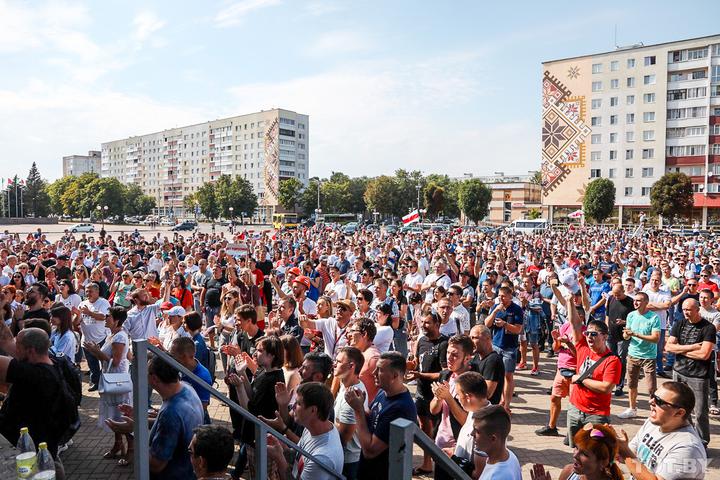
Protests in Maladziečna
Protests in cities outside of Minsk have not received as much attention but are still large in number. Maladziečna has had many anti-government demonstration as well.
Protests in Kobryn
Protests in Kobryn, while not of the size of those in Minsk, have been significant enough for security forces to evacuate from the city on the night of the 9th of August (updates pending).
Protests in Viciebsk
Protests in the city of Viciebsk started considerably earlier than any others, even before the presidential election. The first noted one of large size took place on the 24th of July.
Protests in Grodno
Grodno, aside from Minsk, is probably the city that has experienced the most protests throughout the country, with massive union strikes occurring within as well as demonstrations with an attendance numbering in the tens of thousands.
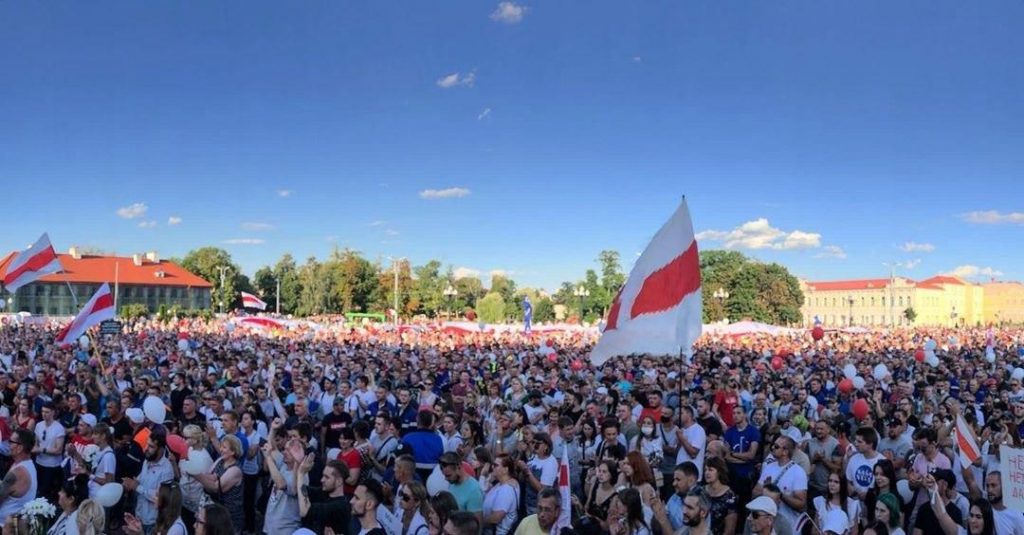
Protests in Brest
Protests in Brest are also in the thousands, but lacking in labor activity and still trailing far behind the turnout that has surfaced in both cities of Grodno and Minsk. It still has more protesters than in Maladziečna and Kobryn.
Protests in Other Cities
Timeline
Union Strikes
Unions have taken to the streets and organized a general strike against the government, which started on the 15th of August. Workers from the 10 largest companies in Belarus in bold have declared a general strike. (Updated August 15)
- Mazyr Oil Refinery
- Naftan
- Gazprom Transgaz
- Belaruskali
- Belarusian Steel Works
- Hrodna Azot
- BelAZ Factory
- Minsk Tractor Works
- Savushkin Product
- Minsk Automotive Factory








